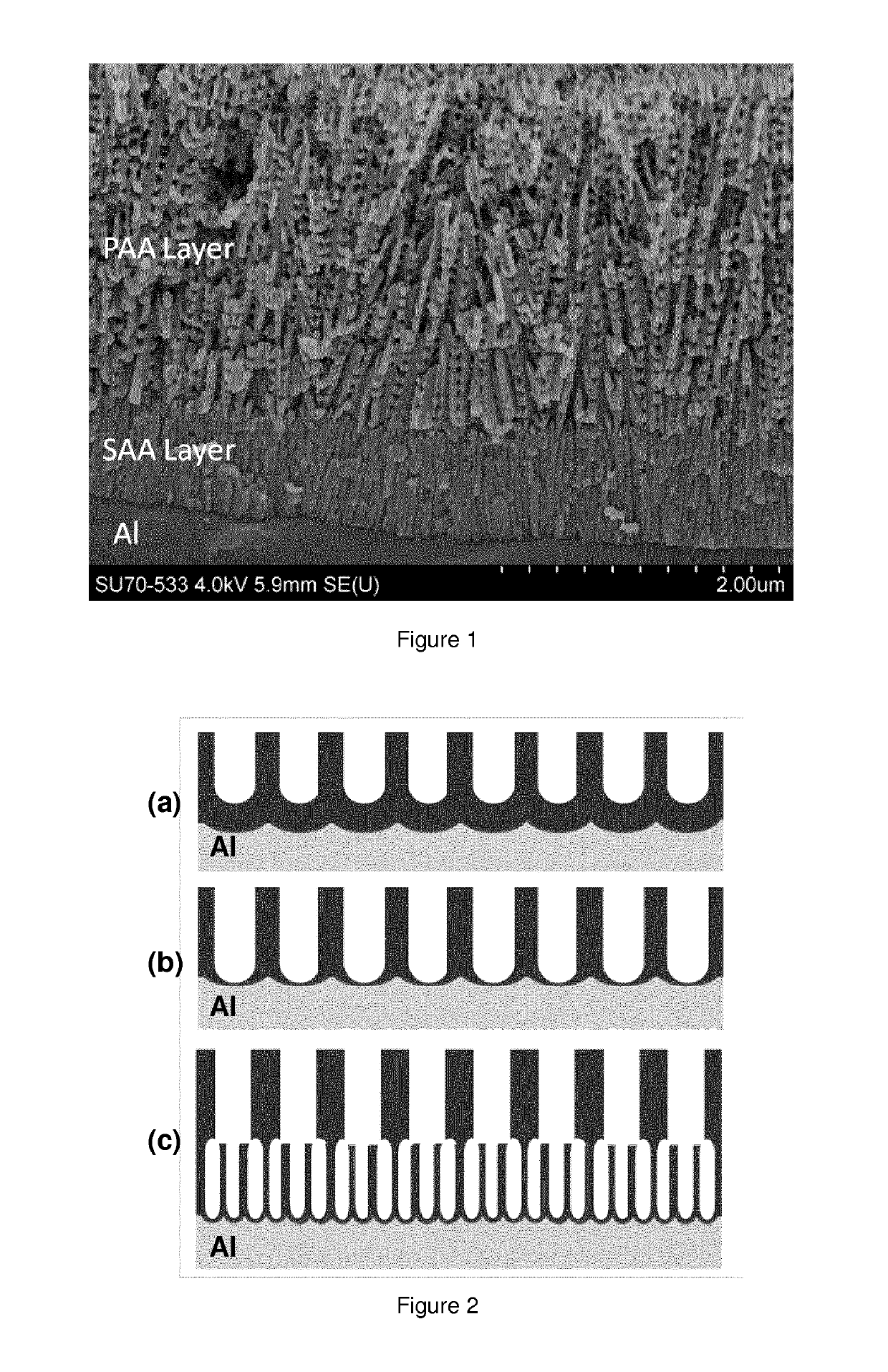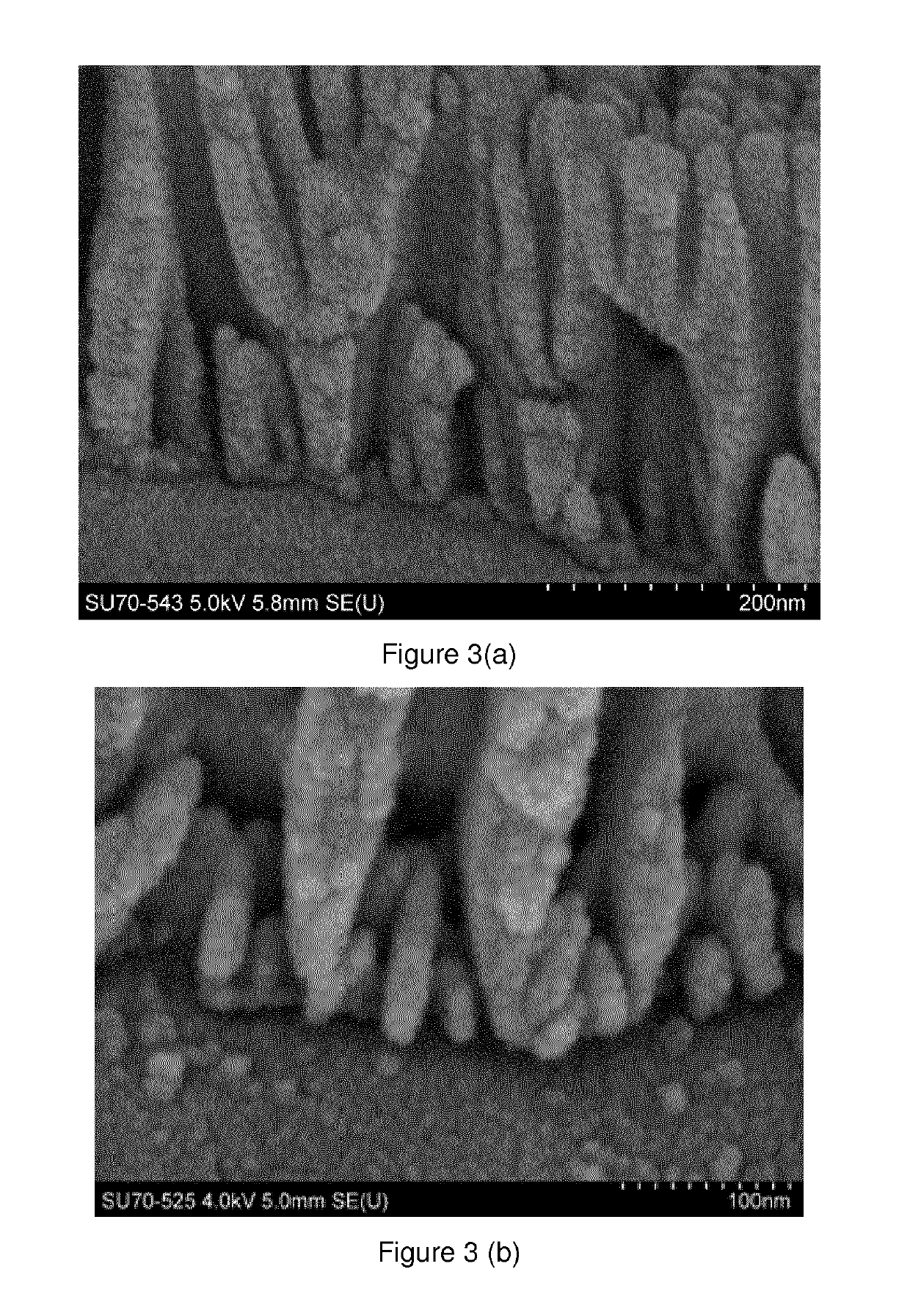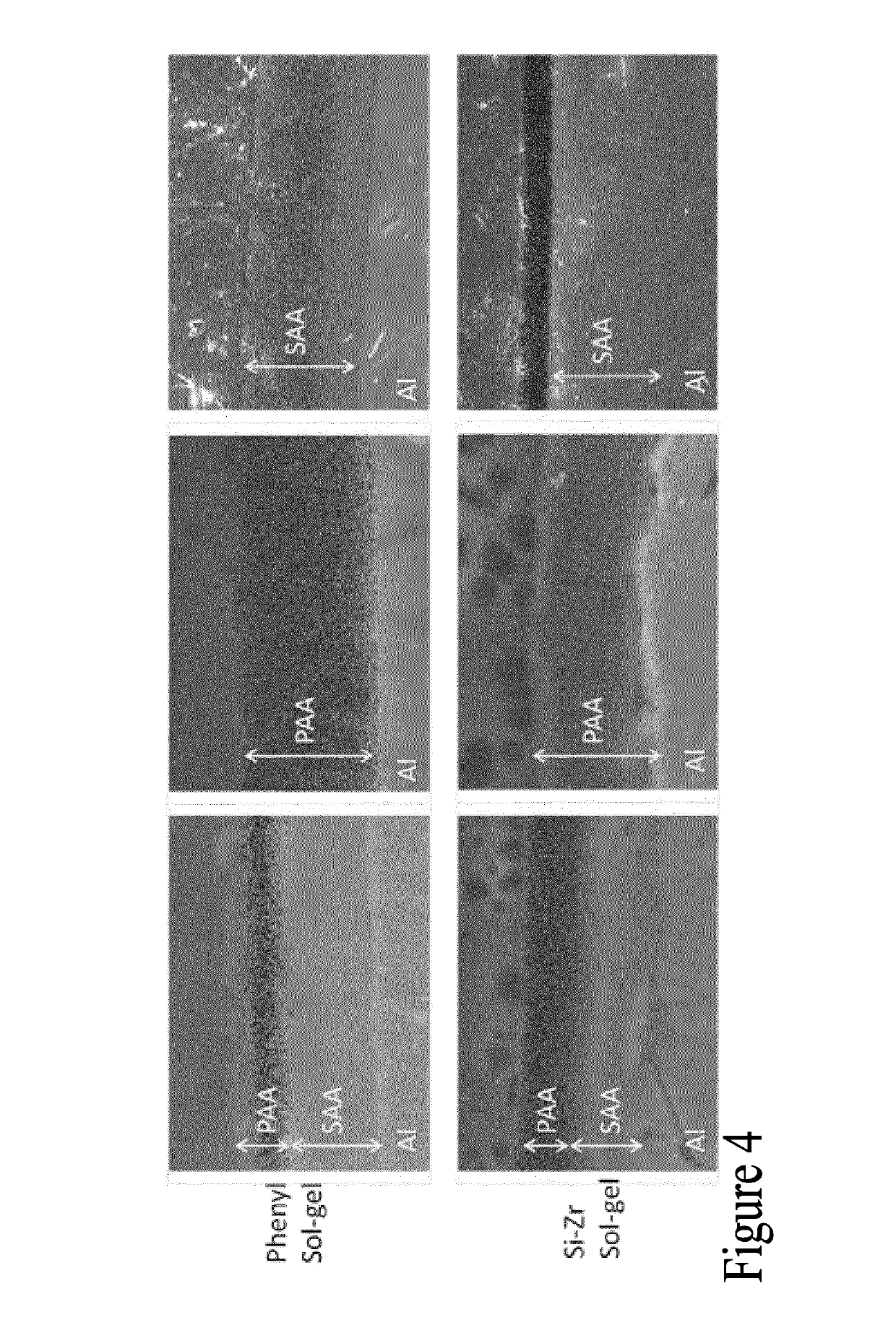Method for forming a multi-layer anodic coating
a multi-layer anodic coating and anodized layer technology, applied in the direction of electrolytic coatings, surface reaction electrolytic coatings, coatings, etc., can solve the problems of limiting the performance of metals against extreme mechanical and chemical attacks, poor corrosion resistance of surfaces, and pore blocking near the surface of anodised layers, etc., to reduce the number of process steps, reduce surface roughness, and increase surface reflectance
- Summary
- Abstract
- Description
- Claims
- Application Information
AI Technical Summary
Benefits of technology
Problems solved by technology
Method used
Image
Examples
example 1
[0087]Two sol-gel coatings were synthesised and used as sealers for the anodic layers.
[0088]Phenyl Functionalised Sol-Gel
[0089]The silane precursor Phenyltriethoxysilane (PhTEOS 98%) (VWR International Ltd (Irl), 98%) was hydrolysed under acidic conditions by adding 5.2 ml of 0.04M HNO3 to 50.6 ml of silane precursor. 30.6 ml of absolute ethanol was immediately added to the mixture and left to stir for 45 minutes. 13.6 ml of de-ionised water was then added dropwise and the solution was left to stir for 24 h before use. The final molar ratio for the formulation was Silane:Ethanol:Water—1:2.5:3.5.
[0090]Silane-Zirconium Hybrid Sol-Gel
[0091]The silane precursor, 3-(trimethoxysilyl) propylmethacrylate (MAPTMS) (Sigma Aldrich, Irl, Assay (99%) was pre-hydrolysed using 0.01 N HNO3 for 45 min (A). Simultaneously, zirconium (IV) n-propoxide (TPOZ) (Sigma Aldrich, Ireland, Assay ˜70% in propanol) was chelated using Methacrylic acid (MAAH)(Sigma Aldrich), at a 1:1 molar ratio for 45 minutes (B...
example 2 (
Combined Electropolishing and Anodising)
[0122]Aluminium alloy 6063 is exposed to an aqueous electrolyte containing 40% H3PO4 at 70° C. The aluminium acts as an anode with a lead cathode. A current of approx 6 A / dm2 is applied. The applied potential is approximately 80V. This procedure results in a combined action of surface polishing as well as growth of a phosphate rich anodic layer on the surface of the metal. The process is conducted for 20 mins to achieve a high level of surface brightening. At the end of the combined polishing and anodising cycle the current is halved and the potential is allowed to float to achieve a lower steady state value. This current reduction process is repeated until a steady state voltage of 10V is achieved. The part is then removed from the phosphoric acid bath and rinsed in de-ionised water. The part is then exposed to a room temperature electrolyte of 25% H2SO4 and a current of 1.5 A / dm2 is applied for 20 mins. This grows a protective anodic layer b...
example 3 (
Surface Conditioning Process)
[0123]Aluminium alloy 2024 is exposed to an aqueous electrolyte containing 10% H3PO4 at 40° C. The aluminium acts as an anode with a lead cathode. A potential of 30V is applied. The process is conducted for 10 mins. This procedure results in a combined action of growing a phosphate rich anodic layer while also conditioning the metal prior to a second anodisation. The process aides in the removal of intermetallics in the alloy that do not anodise at the same rate as the aluminium matrix. At the end of the combined conditioning and anodising cycle the current is halved and the potential is allowed to float to achieve a lower steady state value. This current reduction process is repeated until a steady state voltage of 10V is achieved. The part is then removed from the H3PO4 bath and rinsed in de-ionised water. The part is then exposed to a room temperature electrolyte of 25% H2SO4 and a current of 1.5 A / dm2 is applied for 20 mins. This grows a protective a...
PUM
| Property | Measurement | Unit |
|---|---|---|
| voltage | aaaaa | aaaaa |
| diameter | aaaaa | aaaaa |
| diameter | aaaaa | aaaaa |
Abstract
Description
Claims
Application Information
 Login to View More
Login to View More - R&D
- Intellectual Property
- Life Sciences
- Materials
- Tech Scout
- Unparalleled Data Quality
- Higher Quality Content
- 60% Fewer Hallucinations
Browse by: Latest US Patents, China's latest patents, Technical Efficacy Thesaurus, Application Domain, Technology Topic, Popular Technical Reports.
© 2025 PatSnap. All rights reserved.Legal|Privacy policy|Modern Slavery Act Transparency Statement|Sitemap|About US| Contact US: help@patsnap.com



